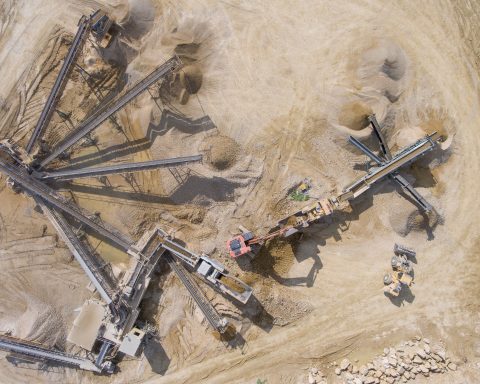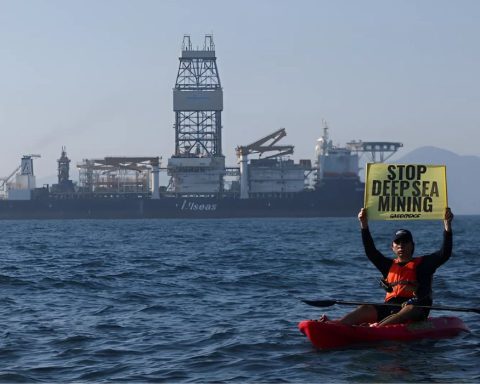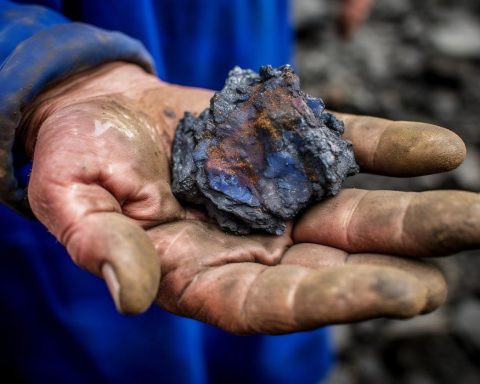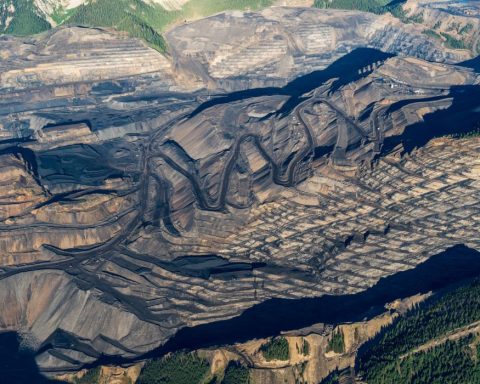Last summer, Tesla CEO Elon Musk announced he would be issuing “giant contracts” to mining companies capable of supplying Tesla with nickel in an “environmentally sensitive” way.
“Please mine more nickel,” he asked bluntly.
By October, Tesla was in talks with Vale, the world’s largest producer of the mineral, about securing sustainable nickel from its Canadian mines to power Tesla’s electric vehicle batteries. No firm definition of “environmentally sensitive” was given, but as minerals become increasingly critical to a low-carbon future, attention around how those minerals are extracted and produced is growing sharply.
Cleantech’s cleanest resources are not in short supply: wind is free and the sun shines, at no charge. Yet enormous amounts of copper, nickel and other minerals are required to harness their energy. Canada is one of the few countries in the world that can provide the materials required for lithium-ion batteries that are vital for EVs and other emerging low-carbon technologies. With companies like Tesla facing increased scrutiny around sourcing minerals from countries with serious human rights and environmental abuses, Canada is positioning itself as a reliable and responsible alternative.
“Those are the key ingredients – responsible and reliable – to be a supplier of choice to our allies around critical minerals and other minerals to fuel the transition to the next economy, the clean economy, the low-carbon economy,” says Ben Chalmers, senior vice-president of the Mining Association of Canada.
Compared to countries like the Democratic Republic of Congo, which produces roughly 70% of the world’s cobalt under a cloud of human rights abuses and child labour, Canada looks like the ideal country of origin. Canadian mining-industry employees earn an average of more than $110,000 annually, are protected by relatively strong safety regulations and – unlike their Congolese counterparts – aren’t forced to operate in conflict zones.
The question is, can Canada offer a steady, sustainable supply of critical minerals? Federal Minister of Innovation Navdeep Bains has spoken of the need for a “mines to mobility” strategy to join the growing EV economy. Quebec has made its plans to lead the charge clear, as part of a $6.7-billion green economy push. Unveiled in November, its Plan for the Development of Critical and Strategic Minerals [CSMs] 2020–2025 identifies more than 20 CSMs that are in high demand by countries looking to secure supply chains for low-carbon economies. Other mineral-rich provinces, including Newfoundland, B.C. and Ontario, also want in on the action.
However, satisfying increased demand for critical minerals holds its own set of challenges. Water preservation, greenhouse gas (GHG) emissions, biodiversity concerns and whether CSM mines can preserve Indigenous rights are all open questions that require satisfactory answers. A few examples:
• Nouveau Monde Graphite’s 2.7-kilometre open-pit graphite mine was authorized by the Quebec government in February. The mine, wedged between Mont-Tremblant National Park and Lac Taureau Regional Park, has raised concerns because of its potential production of millions of tons of acid waste, which would be permanently stored in the watershed of the tourist area. The opposition claims the Quebec government has ignored the advice of the Office of Environmental Public Hearings by authorizing the project before requesting that missing studies be completed. The government’s decree is being heavily criticized for failing to address concerns raised by the Atikamekw Nation of Manawan.
• The proposed Eagle’s Nest Mine in northern Ontario’s Ring of Fire has faced years of opposition, protests and legal battles. While some First Nations in the region support the mining of nickel, palladium and copper, opposition from others who say they haven’t been adequately consulted remains strong. Scientists are also concerned about the potential impact on the area’s muskeg – one of the world’s largest sources of terrestrial carbon storage. Over a decade in the works, the project is still being evaluated with no clear end date.
So how can community needs, especially those of Indigenous communities, take a front seat in mining for the low-carbon future? The First Nations Major Projects Coalition (FNMPC) recommends having Indigenous-led environmental assessments, tapping into Indigenous-led net-zero carbon policy frameworks, and boosting access to capital so that low-carbon Indigenous infrastructure projects can secure equity ownership.
At FNMPC’s Indigenous Sustainable Investment Conference in March, chair Sharleen Gale said it’s time to put the “I” in ESG. “That means ensuring Indigenous interests and worldviews are reflected in environmental, social and governance standards that are driving investments in resource projects today.”
Mining can provide huge value to Indigenous communities when equity is rightfully shared, exemplified by companies like Nuna Group, the majority-Inuit-owned group with a track record of successful construction and mining projects.
Outside of Indigenous communities, projects near historically mining-friendly communities like Cobalt, Ontario, can find that residents are more welcoming of new projects, like Fuse Cobalt’s newly announced cobalt refinery. Greener mines like Goldcorp’s Borden Gold Mine – Canada’s first all-electric mine – could find it easier still to gain community support. Though the promise that Nouveau Monde’s graphite mine will be all-electric hasn’t smoothed over community opposition, meeting ESG standards is becoming increasingly important to everyone from clean economy allies to institutional investors.
Toward sustainable mining
Scientific innovation is already fuelling greener mining and refining practices. The use of plasma technology can potentially boost the yield of precious metal ores like gold and platinum by more than 1,000% and reduce GHG emissions and costs for iron ore pellet production. Finding alternative sources for critical minerals – such as extracting lithium from geothermal plant brine – and boosting mineral recycling rates will be essential to improving the sector’s sustainability.
But work still needs to be done to ensure Canadian mines don’t fall behind on the path to responsibility. A 2019 audit by then–federal environment commissioner Julie Gelfand concluded that Environment and Climate Change Canada’s inspections of metal mines were significantly less frequent (every 3.6 years) in Ontario, the province with the highest number of mines in Canada, and that Fisheries and Oceans Canada did only spotty monitoring to see if mining companies carried out their plans to counteract harm to fish and their habitats. Said Gelfand at the time, “When environmental effects were found, there was no requirement on anybody’s part to actually have to do anything.”
The Mining Association of Canada (MAC) launched its Towards Sustainable Mining (TSM) program in 2004 to drive performance improvement in environmental and social issues – the first program in the world to require site-level assessments. The TSM principles include calls for member companies to implement comprehensive energy and GHG emission management systems; obtain the “free, prior and informed consent” of directly affected Indigenous Peoples for new developments; and conduct annual assessments of the effectiveness of safety and health-management systems. MAC is working with mining associations in seven countries – most recently Norway and Spain – to adapt the TSM framework to their national contexts.
However, the program has been criticized for being too lax and lacking third-party oversight. For most metrics in MAC’s 2019 TSM Progress Report, 80 to 90% of members meet the A, AA or AAA thresholds of the TSM’s grading. “Energy and GHG Emissions Performance Targets” and “Operational Water Management” had the lowest grades, although both still saw 53 and 50% of members, respectively, achieving an A or higher grade.
MiningWatch Canada’s Jamie Kneen says the TSM standard isn’t being enforced consistently and companies must be held to a higher bar if Canada wants to become a genuinely sustainable supplier of choice. Where there is enforcement, he says, the industry-initiated standard is too close to the companies themselves. He adds that while the standard is purportedly mandatory for MAC members, only half of MAC’s mines currently report on it (MAC says many members are either pre- or mid-certification, while others are out of country, and therefore not required to report).

Increased demand for environmentally and socially responsible mining has been met by calls for stricter standards and certifications. The Initiative for Responsible Mining Assurance (IRMA) has gained momentum in the last year and recently completed its first audit of Carrizal Mining’s Zimapán Mine in Mexico, which produces lead, zinc, copper and silver. Its second audit of an Anglo American mine in Zimbabwe, which extracts platinum group metals, was released in February.
IRMA sets itself apart from other programs by not being industry-run and ensures transparency by sharing its audit information publicly. The standard is equitably governed by a diverse set of stakeholders, including affected communities, labour unions and mining companies. Though still in its infancy, the certification is already a selling point for companies – and nations – when searching for sustainable suppliers. IRMA’s member list already includes Microsoft, BMW Group, Ford and steelmaker ArcelorMittal.
MAC’s Ben Chalmers says there is ongoing cooperation and knowledge transfer between MAC and IRMA, with potential for more integration in the future. What’s clear is that ensuring Canada’s mines meet the highest standards will help position the Canadian mining industry for lucrative international contracts and partnerships.
Critical mineral autonomy
While Europe outpaced China on battery investments last year, it’s still short on minerals and is looking for reliable, sustainable partners who extract responsibly. COVID-19 has revealed the vulnerability of supply chains, making “strategic autonomy” a buzzword in Europe and elsewhere. China’s dominance in battery production has led other countries to fear it might withhold exports for its own production and political reasons. Many countries are developing their own or joint networks, among them the European Battery Alliance, which already counts Leading Edge Materials – a Canadian company developing projects within the EU – as a member. As a reliable ally, Canada may be able to establish itself as an external supplier of choice for the EU’s strategic autonomy efforts around batteries.
While recent years have seen a lag in focus on environmental issues in the U.S., President Joe Biden’s $2-trillion climate plan will no doubt look to Canada for a reliable critical mineral supply. In February, Biden and Prime Minister Justin Trudeau released a statement vowing to strengthen the Joint Action Plan on Critical Minerals Collaboration “to target a net-zero industrial transformation, batteries for zero-emissions vehicles, and renewable energy storage.”
Supplying the green wave will require many elements to come together. The mining sector will have to get Canadian stakeholder communities on board. The Canadian government will have an important role not only in increasing incentives for low-carbon mining, but also in further tying financial benefits to sustainable mining practices. Many critical minerals, like rare earth metals and cobalt, lack the price stability and transparency of commodity minerals, making them relatively unattractive to investors looking for stable profits. Government assistance in stabilizing critical mineral prices may be valuable, as well as public procurement (such as purchasing Canadian minerals for publicly funded renewable energy projects) and supply partnerships – a strategy that has proven effective in Scandinavian countries and the EU.
Responsible mining carries costs. The competitive challenge for natural-resource exploitation cannot be ignored: countries with a history of critical mineral dominance and lax labour regulation like China or the Democratic Republic of Congo have a price advantage that is difficult to compete with under current conditions.
As Alan Young, co-director of the Materials Efficiency Research Group (MERG), says, “There is a huge opportunity to couple the imperative for clean energy and responsible mining.” He adds, “By caring for the larger context, we create a more competitive environment for us and benefit the citizens of other countries as well.” Doing so can give Canadian companies preferential access to growing markets and, as Young notes, “capital concerned with the liabilities and reputation impacts.” With institutional investors like the Climate Action 100+ (representing more than US$52 trillion in assets under management) leading the charge, Canadian mining has a tremendous opportunity to access that capital and become a go-to partner and supplier.
Maria Laura Barreto, co-director of MERG, says going beyond the status quo will be key. “Canada will be very well positioned to be one of the key suppliers of these minerals for the low-carbon future. But there is a huge risk here: just having an abundance of strategically important resources is not good enough. Canada will have to show both quality and quantity of minerals extractions to qualify for emerging responsible minerals markets.” In other words, the reserves are there, but attaining the sustained benefits of mining these minerals will require a willingness to change how we supply them.
Toby Sparwasser Soroka is a German-Canadian whose professional interests span across social entrepreneurship and disruptive technology.







